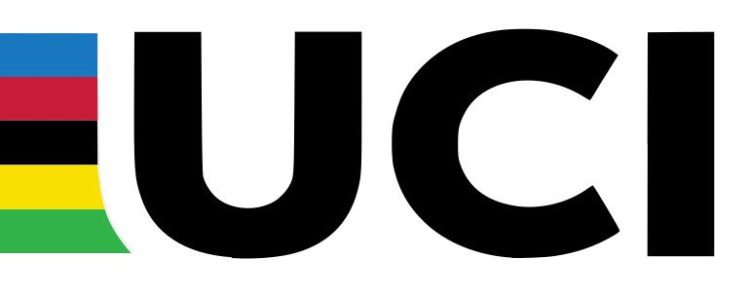Giro d’Italia 2024 : A Guide to Italy’s Grand Tour
By Tim Perkin
The Giro d’Italia 2024 starts on Saturday, 4th May. It is the first Grand Tour of the cycling season and one which always delivers exciting racing.
Last year’s race ended in dramatic fashion as Primož Roglič (Jumbo-Visma) delivered an incredible performance in the individual time trial on stage 20. He won the stage and consequently the Giro, by only 14 seconds over Geraint Thomas (INEOS Grenadiers). This victory marked the start of an unprecedented clean sweep of Grand Tour wins for Team Jumbo-Visma (now Visma-Lease a Bike) in 2023.
The Visma-Lease a Bike team will be looking to repeat their victory this year, which will be the 107th edition of Giro d’Italia. With defending champion Primož Roglič focussing on the Tour de France, a new winner is guaranteed to be crowned when the 3-week race finishes in the historic city of Rome, on Sunday, 26th May.
Brief History
The Giro d’Italia, also known as the “Giro,” is the second most important stage race in the world, following the Tour de France, which inspired it.
Italian newspaper editor Tullo Morgagni, who worked for La Gazzetta dello Sport, was pivotal in championing the need for an Italian bicycle race, similar to that of the Tour de France. Convinced of its merit, the paper’s owner, Emilio Costamagna sanctioned the event which was then first held on 13th May, 1909.
The leader of the race wears the pink jersey, which is called the “Maglia Rosa”. This happened because the organisers of the event La Gazzetta dello Sport printed their newspaper using pink paper. Although the winner of the first ever Giro Italia in 1909 was Italian Luigi Ganna, the use of the pink jersey was not introduced until 1931 and so the winner of the first ever Maglia Rosa was Francesco Camusso.

(Image – Giro d’Italia)
Three riders hold the record for the most wins: Italians Alfredo Binda and Fausto Coppi and Belgian Eddy Merckx with five wins each.
The Route
The Giro d’Italia is always a challenge and this year the route totals 3386.7 km and is slightly shorter than the previous year, which was 3489.2km. In total, the race includes 44,500 meters of climbing which is also less than the 2023 edition, which had 51,400 meters of elevation.
The average stage is 161.3km long and stage 15 is the longest, measuring 220km. This challenging day finishes at the Mottolino ski slope, at an elevation of 2385m and the stage will see riders tackle five climbs. To reach the finish, they will battle brutally steep sections that in places reach a maximum gradient of 18%.
There are five mountain stages. Among them stages 15, 16, and 17 consist of three consecutive days, which are interspersed with a rest day. These stages, along with the two individual time trials (Stage 7 and 14), are crucial for the entire race. The time trials total a combined distance of 69.7km.
The race will finish like it did in 2023, on the Via di San Gregorio, close to the Colosseum. In this historic and iconic setting, in the centre of Rome, you can expect a bunch sprint but the question is: which sprinter will make it through the mountains to be in a position to compete for victory against this magnificent backdrop?
The decisive stages
Like Italian Operas that build to a specular crescendo, the 2024 Giro d’Italia is set to do the same. The end of second week, and final week in particular, will see riders tackle four decisive stages.
The first crucial stage is stage 14 on Saturday, 18th May. This individual time trial will see riders attack a relatively flat 31.2 km course from Castiglione delle Stiviere, that finishes in Desenzano del Garda, which is situated on the banks of the spectacular Lake Garda, in northern Italy. Riders will not want to concede any time to their rivals, leaving the leaders with high pressure to showcase a consistent performance.
Being consistent will also be the key tactic for stage 15 on Sunday, 19th May. This stage is a 220 km marathon through the mountains, tackling the famous Passo del Mortirolo, which reaches an elevation of 1854m. From the peak, there still is 66km (most of which is uphill), to the finish in Livigno. This stage will certainly show who has the form to contest the Maglia Rosa.
Stage 16 is another epic part of the race, coming immediately after the rest day, where the iconic Passo dello Stelvio or simply “the Stelvio” climb is tackled. The climb rises to 2,757 metres in altitude and is referred to as the “Cima Coppi” which is the highest point that the riders must climb during the race. The climb was first introduced for the 1965 Giro d’Italia in honour of Italian cyclist Fausto Coppi. With this iconic climb being relatively early in the stage, it is unlikely to have an outcome on the General Classification. However, the final climb to Santa Cristina in Val Gardena will likely play an important role during this phase of the race where we will most likely see the General Classification contenders jostling for position.
Up next is stage 20, the penultima stage of the race which sees riders tackle the Monte Grappa on two occasions. With an average gradient of 8.1% and a maximum of 17% in places, it is a steep and long climb covering 18.1 km in total. The second ascent will provide the final opportunity for the General Classification riders to do something spectacular, before the descent into the finish, in the medieval town of Bassano del Grappa.
The contenders
The overwhelming favourite for the Maglia Rosa is two-times Tour de France Champion, Tadej Pogačar, racing for UAE Team Emirates. However, victory is not a certainty and in a Grand Tour, anything can and often does happen, like in 2023.
The previous year, Remco Evenepoel had just won the individual time trial and was leading the race but following an unexpected positive test for COVID, had to withdraw from the race. This resulted in Geraint Thomas inheriting the leader’s jersey, which he eventually lost to Primož Roglič, in the final time trial.
This year, Geraint Thomas is returning with his INEOS Grenadiers team in an attempt to improve his second-place finish. He is coming with a team stacked with strong riders, such as Italian Filippo Ganna, who always delivers a solid performance in his home race and will hope to do well in the two individual time trials.
Another contender to watch out for is Australian Ben O’Connor, racing for Decathlon AG2R La Mondiale Team. In 2021 he proved his ability by finishing 4th in the Tour de France, and so far this season he has finished 5th in Tirreno-Adriatico and 2nd in the UAE Tour.
Magic moments
There is something different about the Giro d’Italia. It’s a race where magical moments happen. Last year it was Primož Roglič completing the time trial of his life to win the race. Similarly, in 2018 on stage 19 with 80 kms remaining, Chris Froome launched a solo attack over the mountains. He won the race and claimed the overall lead, which he held until the end. With Tadej Pogačar racing, one thing is guaranteed and that is something inspiring will happen, the only question is when? It is going to be an entertaining race that will end with hopefully a climactic finish.
About the Author
Tim has a passion for cycling and it was integral to regaining fitness after an arduous battle with cancer. Tim is the founder of Mountain Massif, who host esports cycling events. Over the years, Tim has written about a range of cycling topics, including testing and reviewing the major smart trainers. In addition, he has been fortunate to ride and interview some of the sports leading figures such as Tour de France winner Andy Schleck and sprint legend André Greipel.






















